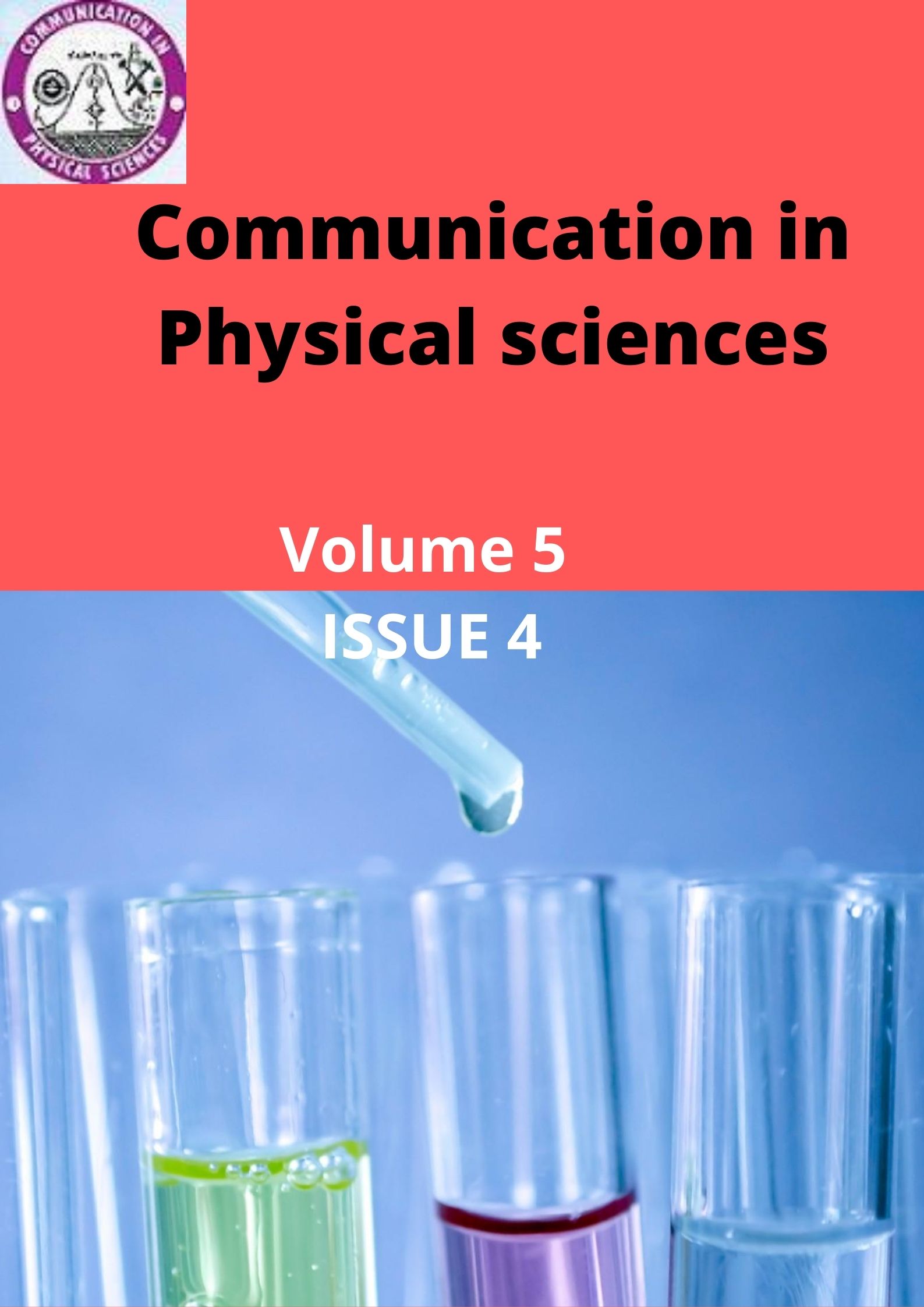Experimental study of the removal of cobalt ion from aqueous solution using chitosan
Keywords:
Contamination of water, cobalt, remediation, adsorption, chitosanAbstract
Authors: Augustine Odiba Aikoye , Ifiok D. Ufia and E. O. Udofia
High concentration of heavy metals (such as cobalt) can create serious environmental problems through pollution of the aquatic environment and subsequent magnification, accumulation and transfer to other components of the environment. In attempt to search for ecofriendly approach aimed at reducing concentration of cobalt in contaminated water. The effectiveness of chitosan for the removal of cobalt ion from aqueous solution was investigated with reference to concentration, period of contact and through the measurement absorbance before and after adsorption. We observed that chitosan has good adsorption surface for cobalt ion and the adsorption was facilitated through the N-H and C-O functional groups in the chitosan.
Downloads
Published
Issue
Section
Most read articles by the same author(s)
- Augustine Odiba Aikoye, Theoretical and Biochemical Information studies on Compounds Detected in GCMS of Ethanol Extract of Chromolaena odorate Leaf , Communication In Physical Sciences: Vol. 6 No. 1 (2020): VOLUME 6 ISSUE 1
- Onyeije Ugomma Chibuzo, Augustine Odiba Aikoye, Chemical Information from GCMS Analysis of Acetone-Ethanol Ex-tract of Piper guineense Leaf. Part 2 , Communication In Physical Sciences: Vol. 5 No. 4 (2020): VOLUME 5 ISSUE 4
Similar Articles
- Gideon Wyasu, Batch adsorption of Mn2+ and Co3+ from Refinery wastewater using activated carbon from epicarp of Detarium microcarpum and Balanites aegyptiaca shells , Communication In Physical Sciences: Vol. 3 No. 1 (2018): VOLUME 3 ISSUE 1
- Okoche K. Amadi, Uloma O. Akoh, Innocent A. Okoro, Egwuobasi Nwabuokechi,, Decontamination of Pb2+, Cd2+ and Ni2+ Polluted Water by Adsorption Unto Butterfly Pea (Centrosema pubescens) Seed Pod , Communication In Physical Sciences: Vol. 6 No. 1 (2020): VOLUME 6 ISSUE 1
- Nyeneime W. Akpanudo, Onyeiye Ugomma Chibuzo, Musanga cecropioides Sawdust as an Adsorbent for the Removal of Methylene Blue from Aqueous Solution , Communication In Physical Sciences: Vol. 5 No. 3 (2020): VOLUME 5 ISSUE 3
- Anduang Ofuo Odiongenyi, Adsorption Efficiency of Scotch Bonnet Shells as a Precursor for Calcium Oxide Nanoparticles and an Adsorbent for the Removal of Amoxicillin from Aqueous Solution , Communication In Physical Sciences: Vol. 9 No. 3 (2023): VOLUME 9 ISSUE 3
- Comfort M. Ngwu, Okoche K. Amadi, Augustine C. Egwu, Sorption Studies on the Removal of Industrial Dye Aniline Yellow From Aqueous Solution Using Surfactant Modified Iron Filings , Communication In Physical Sciences: Vol. 6 No. 1 (2020): VOLUME 6 ISSUE 1
- Anduang Ofuo Odiongenyi, Influence of Sol Gel Conversion on the Adsorption Capacity of Crab Shell for the Removal of Crystal Violet from Aqueous Solution , Communication In Physical Sciences: Vol. 8 No. 1 (2022): VOLUME 8 ISSUE 1
- Kabiru Usman, H. Abba, O. R. A. Iyun, Preparation and Characterization of African Star Apple Seed Shell (Chrysophyllum Africanum) For The Removal of Acid Red 9 , Communication In Physical Sciences: Vol. 8 No. 1 (2022): VOLUME 8 ISSUE 1
- Helen O. Chukwuemeka-okorie, Ifeanyi Otukere, Kovo Akpomie, Isotherm, Kinetic and thermodynamic investigation on the biosorptive removal of Pb (II) ion from solution onto biochar prepared from breadfruit seed hull , Communication In Physical Sciences: Vol. 12 No. 3 (2025): VOLUME 12 ISSUE 3
- Nsor Ofo Alobi, Onyeije Ugomma Chibuzo , Wood Saw Dust as Adsorbent for the Removal of Direct Red (DR) Dye from Aqueous Solution , Communication In Physical Sciences: Vol. 4 No. 2 (2019): VOLUME 4 ISSUE 2
- A. O. Odiongenyi, Adsorption and Thermodynamic Studies on the Removal of Congo Red Dye from Aqueous Solution by Alumina and Nano-alumina , Communication In Physical Sciences: Vol. 4 No. 1 (2019): VOLUME 4 ISSUE 1
You may also start an advanced similarity search for this article.




